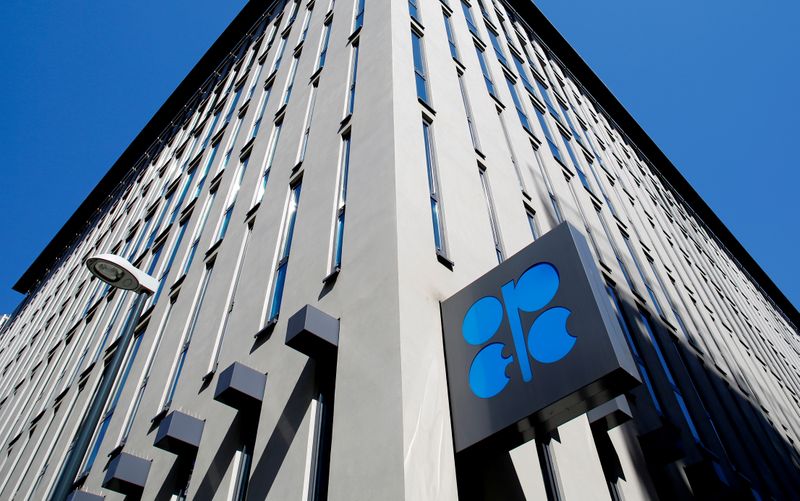By Alex Lawler and Ahmad Ghaddar
LONDON (Reuters) - Days after OPEC+ reached a record deal to cut oil output in an attempt to shore up a market reeling from the coronavirus crisis, their calculations are in question.
The Organization of the Petroleum Exporting Countries, along with Russia and other producing nations - known as OPEC+ - has partnered with other oil-pumping countries including the United States to cut supply by around 20 million barrels per day.
That is about 20% of global demand before the coronavirus pandemic, an unprecedented step to tackle an exceptional drop in prices during first quarter to an 18-year low in March.
"Everyone must have realised that this simply isn't possible in either technical or mathematical terms," Eugen Weinberg, oil analyst at Commerzbank (DE:CBKG), said of the output target.
"No matter how hard OPEC tries to convince the market of its strength and resolve, it has so far failed to succeed."
In its weekend deal, OPEC+ agreed to cut output by 9.7 million bpd in May and June. The rest of the cuts, from the United States, Canada and others, are less concrete and are due to come as a result of weak pricing and take place over time.
"Some might have expected that, as a result of this unprecedented production cut agreement, oil prices would jump higher. That did not happen," ABN Amro said in a note.
The bank added that the market had already priced in a deal after U.S. President Donald Trump announced it was expected to happen in early April.
Graphic - Oil prices shrug April 12 OPEC+ deal: https://fingfx.thomsonreuters.com/gfx/editorcharts/azgvoemlvdx/eikon.png
Saudi's energy minister said the actual cuts would amount to 19.5 million bpd once 3.7 million bpd reduction pledges by G20 producers and strategic reserve purchases of around 200 million barrels over the next couple months are counted.
IEA 'STILL WAITING'
But the International Energy Agency, the energy watchdog of industrialised economies, made no mention of such plans in a report on Wednesday, saying it was "still waiting for more details on some planned production cuts and proposals to use strategic storage."
Oil transfers into strategic stocks could represent about 2 million bpd of supply withdrawn from the market, the IEA said.
But that would leave the total 20 million barrels short.
The United States, along with Japan and South Korea, have said they could buy oil to replenish reserves.
India plans to completely fill its strategic petroleum reserve (SPR) by the third week of May by moving about 19 million barrels into the sites by then.
And in Texas, marathon talks between energy regulators and top executives have so far not yielded any results on a move to slash output by 1 million bpd.
A draft OPEC+ communique seen by Reuters, which had said global cuts would be more than 20 million bpd, even suggested including involuntary output declines in Iran, Libya, and Venezuela - OPEC countries exempted from cuts due to U.S. sanctions or internal strife.
OPEC+ also took into account the difference between current production and the baseline used for the cuts, which is much lower for producers like Saudi Arabia and the United Arab Emirates who said they raised production in recent weeks.
However, the published statement removed any mention of the 20 million bpd figure or how it was calculated.

"The higher number the producers concoct, the less credible it is. Realistically I think the actual cut is more likely to be a third of that, around 7 to 8 million barrels per day," one crude futures trader told Reuters.